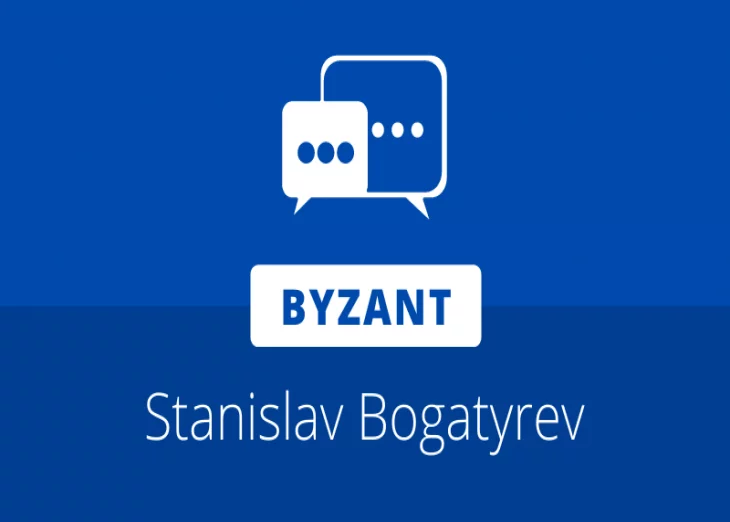BYZANT: Exploring the application scenarios of NeoFS with Stanislav Bogatyrev of Neo SPCC

Byzant is a series that provides access to insider perspectives from knowledgeable individuals in the Neo ecosystem and broader blockchain industry. For the following week after a guest has shared their insight, they will be encouraged to participate in discussion on the Neo subreddit by answering relevant questions from the community.
This week we spoke to Stanislav Bogatyrev about the potential use cases for NeoFS and how it could be practically applied from the individual to enterprise scale.
Stanislav is the CIO and co-founder of Neo Saint Petersburg Competence Center and works primarily on NeoFS Core and Services. As an expert in distributed systems, particularly decentralized data storage, Stanislav has worked for several noteworthy companies. At Dell EMC he worked on the Centera content addresses storage solution, then later the Celerra product family. During his time at Clodo.ru, he architected the first public object storage offering in the Russian market. Most recently at Samsung, Stanislav worked on the Tizen infrastructure, developing firmware updates for watches, TVs, ACs, and other hardware.
Readers interested in asking further questions about the applications of NeoFS as a decentralized storage solution can join the conversation and speak with Stanislav in the following thread:
NNT: As a public distributed storage network, NeoFS is available to be used in many ways that go beyond the blockchain itself. Which use cases do you think show the most initial promise for the technology, and when will users be able to test it for themselves?
Stanislav Bogatyrev: Data usage is growing faster than ever before, and we all need better solutions to store, share, and protect it. The existing cloud storage services jump up to offer the easiest and most robust approaches. NeoFS is one of them, but it definitely stands out.
NeoFS is a distributed decentralized object storage platform integrated with the Neo Blockchain, focusing on fault tolerance, scalability, and performance. The NeoFS user is the only one that can decide on authorization rules and the storage policy. One may set the number of desired replicas or specify the requirements storage nodes must satisfy. For example, one may set a policy for their data to be stored with three copies in Europe, and only by nodes that offer low latency SSD storage.
An ordinary user may store important personal data on specific nodes as backups so that they never lose the data. Or one may become a node operator to store others’ data and get paid for it. There is no reason to worry about the gRPC-based protocol used in NeoFS. The protocol gateways we utilize allow users to work with any protocol you need. For example, one of them is the S3 protocol gateway, compatible with AWS S3. It means that you can start experiencing NeoFS via any accessible S3 software. For example, you could use any regular S3 backup utility to perform a backup in NeoFS. It is quick – create a container in NeoFS, set the credentials, and proceed with regular use of the software. No need to sign up for Amazon or deal with any restrictions it imposes – all you need is a Neo Wallet, i.e. the key.
The same is true for bigger companies, which can set up their own nodes to avoid the need to develop a complex proprietary interface. You don’t have to take these long and exhausting steps. Even if such nodes will be part of a public network, the company can set its own data placement and access policy, making it open to their employees while remaining secure. Enjoy your regular S3 software and know that no information will ever leave your company.
If you own a small web project, NeoFS will help you to host your site in a network and ensure the reliability of the relevant servers. You don’t need to tune your website for working via NeoFS. Use the S3 gateway (all S3 plugins for CMSs) to load static content in NeoFS and seed data through a special HTTP protocol gateway. For an insignificant charge, you can further improve your security and reduce latency. As an example of a successful integration of NeoFS and real web services, we may point to the NeoFS.Send service. This sample web application was created to let anyone load objects in the storage network and request them wherever they are.
As is the case for NeoFS.Send, even the tiniest web project will be able to build a small CDN for personal use. The content uploaded to your site or app can be requested via this independent CDN network layer, enabling caching, geo proximity optimizations, etc. Further, in 2021, we plan to launch a ‘big’ Neo3 & NeoFS-based CDN to attract larger players, such as data centers and ISP companies. It will let us truly decentralize both data storage and its delivery. Being a data center or a corporation, you definitely have some spare storage capacity. NeoFS is your chance to use it advantageously. Install the software, generate keys, and receive a reward while others use your facilities.
As it is absolutely vital for us to learn about your experience and find ways to further improve the system, we are going to launch NeoFS in the Neo3-Preview4 TestNet and invite all of you to take part in it. Either as an individual or a corporation, you are welcome to join the test and grant us your feedback.














Article comments